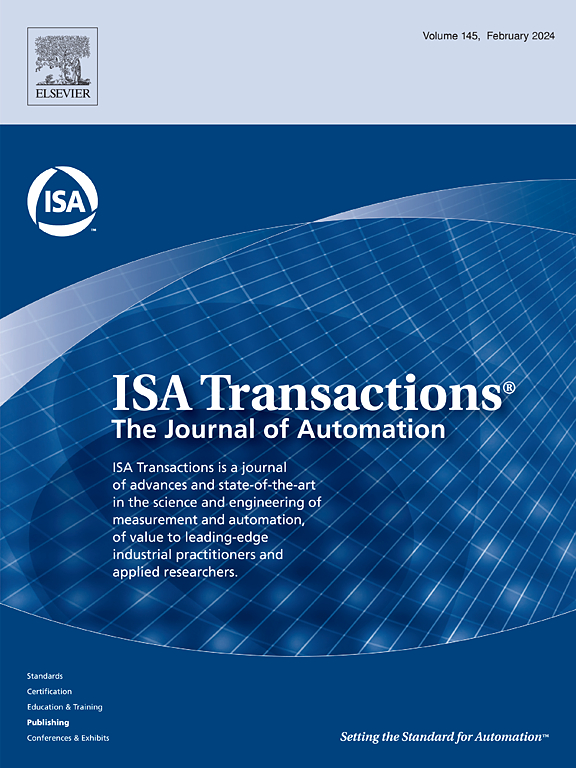Consensus seeking in large-scale multi-agent systems with homogeneous connections by incorporating two-hop neighbor states
IF 6.5
2区 计算机科学
Q1 AUTOMATION & CONTROL SYSTEMS
引用次数: 0
Abstract
The development of multi-agent consensus raises the importance of network topology. As the number of agents increases, multi-agent systems (MAS) in a large-scale and high-density topology demand higher resources, which consequently degrades efficiency of consensus. Existing approaches that consider only direct point-to-point neighbors may overlook potential topological information, further hindering consensus performance. To achieve fast consensus in large-scale and high-density topologies, a framework named Homogeneous Connections Based on Agents State Fusions MAS (HCASFMAS) is proposed. The framework extracts broader topology information of consensus degree by fusing states of two-hop neighbors. Leveraging homogeneous idea, agents establish homogeneous connections with neighbors that exhibit a higher consensus degree, ultimately accelerating the consensus process while preserving connectivity. First, a neighbor selection strategy based on consensus degree of agent state fusion is introduced to construct candidate neighbors, aiming to reduce redundant connections. Second, an adaptive consensus algorithm is formulated to flexibly adapt to the distribution of neighbors. Finally, a candidate constraints set is established to accelerate consensus by expanding the scope of constraints while preserving connectivity. In this study, connectivity and convergence of the system are theoretically analyzed from a geometric perspective. Simulation experiments are conducted to compare the proposed method with existing approaches under different densities and topologies. Simulation results demonstrate the superiority of this method in achieving fast convergence, particularly in large-scale and high-density scenarios.
结合两跳邻居状态的大规模同构连接多智能体系统的共识寻求。
多智能体共识的发展提高了网络拓扑的重要性。随着智能体数量的增加,大规模高密度拓扑下的多智能体系统(MAS)对资源的要求越来越高,从而降低了共识效率。现有的只考虑直接点对点邻居的方法可能会忽略潜在的拓扑信息,进一步阻碍共识性能。为了在大规模高密度拓扑中快速达成共识,提出了基于agent状态融合的同构连接MAS (HCASFMAS)框架。该框架通过融合两跳邻居的状态提取更广泛的一致度拓扑信息。利用同质思想,代理与表现出更高共识度的邻居建立同质连接,最终在保持连通性的同时加速共识过程。首先,引入基于智能体状态融合一致性的邻居选择策略来构建候选邻居,以减少冗余连接;其次,提出一种自适应共识算法,灵活适应邻居的分布;最后,建立候选约束集,在保持连通性的同时扩大约束的范围,从而加速共识。本研究从几何角度对系统的连通性和收敛性进行了理论分析。在不同密度和拓扑结构下进行了仿真实验,并与现有方法进行了比较。仿真结果表明,该方法在实现快速收敛方面具有优势,特别是在大规模和高密度场景下。
本文章由计算机程序翻译,如有差异,请以英文原文为准。
求助全文
约1分钟内获得全文
求助全文
来源期刊

ISA transactions
工程技术-工程:综合
CiteScore
11.70
自引率
12.30%
发文量
824
审稿时长
4.4 months
期刊介绍:
ISA Transactions serves as a platform for showcasing advancements in measurement and automation, catering to both industrial practitioners and applied researchers. It covers a wide array of topics within measurement, including sensors, signal processing, data analysis, and fault detection, supported by techniques such as artificial intelligence and communication systems. Automation topics encompass control strategies, modelling, system reliability, and maintenance, alongside optimization and human-machine interaction. The journal targets research and development professionals in control systems, process instrumentation, and automation from academia and industry.
 求助内容:
求助内容: 应助结果提醒方式:
应助结果提醒方式:


